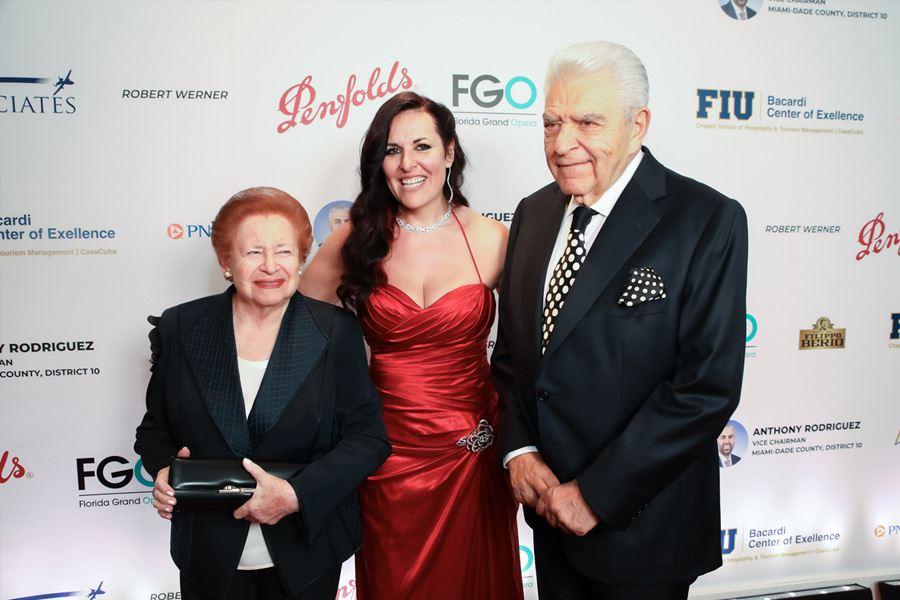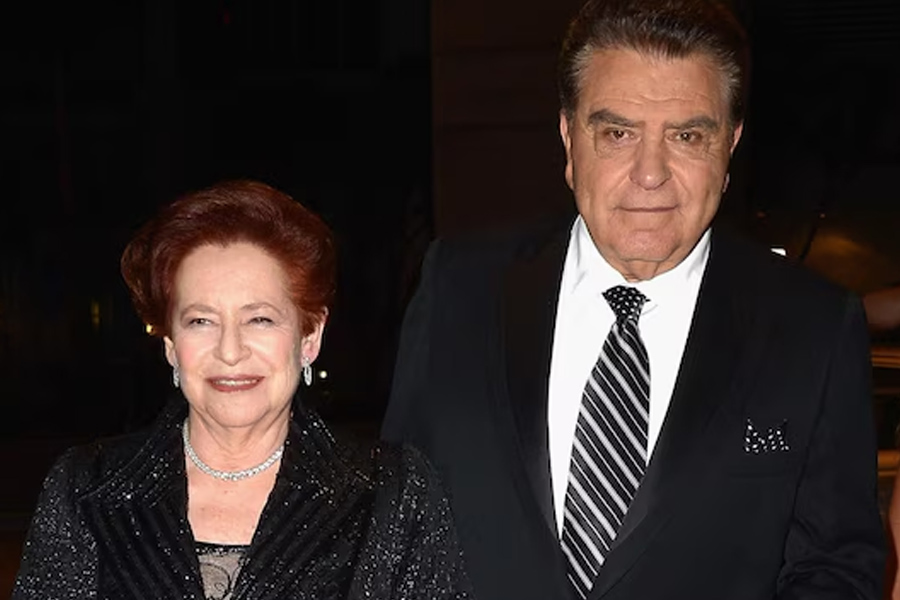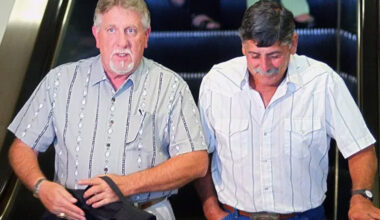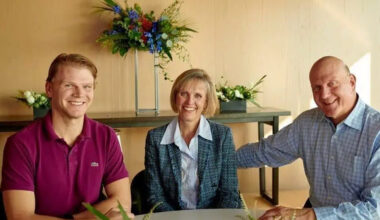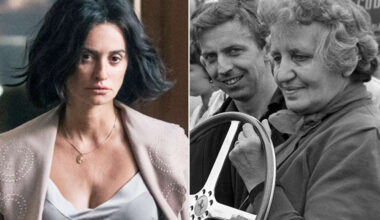Basic Information
| Field | Details |
|---|---|
| Full name | Teresa Muchnik Rosenblum |
| Also known as | Temmy / Temy Muchnik |
| Nationality | Chilean |
| Community | Chilean Jewish community |
| Spouse | Mario Luis Kreutzberger Blumenfeld (Don Francisco) |
| Marriage | Early 1960s (commonly cited as 1962–1963) |
| Children | Commonly named: Vivian (Vivi), Francisco, Patricio; occasional references suggest a fourth, but three are consistently named |
| Public role | Archivist and steward of Don Francisco’s career legacy |
| Notable recent activity | Donation/transfer of the family’s 62-year archive for institutional curation (2024) |
| Residence context | Life and work connected to Chile; long stretches tied to the U.S. during Don Francisco’s international television career |
| Date of birth | Not publicly reported |
A Quiet Architect of a Giant Legacy
Behind one of Latin American television’s loudest, longest-running spectacles stood a quiet metronome: Teresa “Temmy” Muchnik Rosenblum. While her husband, Don Francisco, became a household name across continents, Teresa shaped the backstage narrative—collecting, preserving, and organizing the materials that tell the story of a media empire. Newspaper clippings. Awards. Costumes. Scripts. Photographs. Even fragments of the show’s cultural weather—personal notes and mementos that capture the feeling of an era as much as its facts.
For decades, she did this work largely offstage. Then, in 2024, the collection she assembled—spanning roughly 62 years—was formally placed in institutional hands for curation and potential public display. It was a turning point: a private life’s labor carefully prepared for public memory, an intimate mosaic readied for the museum wall.
Temmy has kept her own biography close. There is no parade of résumés, no blizzard of talk-show appearances in her name. Instead, her legacy shines through presence: the long marriage, the family framework, the steady curation of an archive that helps tell Chile’s television story and its diaspora arcs across the Americas.
Family Portrait: Names, Roles, Relationships
The family that Teresa and Mario built has always been a core part of their public-private balance. Their eldest, Vivian—“Vivi”—was born in 1965 and followed her father into television, becoming a familiar face on Chilean screens. Francisco and Patricio, their sons, appear far less publicly, emblematic of the family’s preference for measured visibility. Various profiles mention multiple grandchildren—often cited as nine—though the family keeps details guarded.
What emerges from the family’s footprint is a picture of mutual reinforcement. Don Francisco became the emblematic showman, the tireless host, the fundraiser, the cross-border cultural ambassador. Teresa became the archivist, the family’s curator, the verifier of dates and guardian of ephemera, the one who saw in stacks of paper and reels of tape an heirloom for a nation.
Family Overview
| Name | Relation | Notes |
|---|---|---|
| Teresa “Temmy” Muchnik Rosenblum | Central figure | Archivist and steward of the family media archive; low public profile |
| Mario Luis Kreutzberger (Don Francisco) | Spouse | Iconic television host and producer; career spans six decades |
| Vivian “Vivi” Kreutzberger Muchnik | Daughter | Television presenter with a public profile in Chile |
| Francisco Kreutzberger Muchnik | Son | Private figure; appears in family references |
| Patricio Kreutzberger Muchnik | Son | Private figure; appears in family references |
| Grandchildren | Family | Multiple grandchildren, often reported as nine in profiles |
Names and Spellings: Temy, Temmy, Muchnik, Muchnick
Spanish-language media and photo captions often render her name in slightly different forms. “Teresa Muchnik Rosenblum” is the most consistent, while “Temmy” (or “Temy”) is the affectionate nickname that surfaces at public events and in family mentions. The surname occasionally appears as “Muchnick” in captions, a common variance when transliterating surnames with Eastern European roots into Spanish and English.
Key Milestones and Dates
- Early 1960s: Marriage to Mario Luis Kreutzberger, just as his on-air persona, Don Francisco, begins building momentum in Chile.
- August 28, 1965: Birth of their daughter, Vivian (Vivi), in Santiago.
- 1970s–2000s: The peak television decades—Sábado Gigante’s ascendancy, cross-border expansion, marathon philanthropic events, and international tours. Quietly and methodically, Teresa compiles and organizes the family archive.
- 2010s: Golden-anniversary tributes and milestone events keep the couple in public view; Teresa appears at galas and commemorations, often cited in captions as “Temy” or “Temmy.”
- 2024: The family’s decades-spanning archive—memorabilia, press, audiovisual materials, awards, costumes—moves into institutional custody for professional curation and potential exhibition.
What the Archive Means
Television is ephemeral by design: shows run, crowds laugh, the lights go down. Without an archivist, what remains is rumor and nostalgia. With an archivist, it becomes history. Teresa’s collection work has the feel of a one-woman conservation lab: newspaper clippings rescued from yellowing edges, costumes that once commanded a stage now meticulously stored, photographs that tether memory to a date and a place.
In Chile’s broader media narrative, this archive matters. It’s not simply a record of a star, but a cultural chronicle of migration, entertainment, and public service. It illustrates how a show born in Santiago could grow into a transnational ritual, and how a family rooted in the Chilean Jewish community helped shape mass culture for generations. Teresa’s contribution makes that story legible—and preservable.
Public Life, Private Boundaries
There is a paradox at the center of Teresa’s public image: the more essential her work becomes to the national narrative, the more tightly guarded her own biography remains. She is spotted at award ceremonies and anniversaries, shares the spotlight briefly when the subject is heritage, and then retreats. No inflated speeches about legacy, no personal brand. Instead, she communicates through order—boxes labeled, materials indexed, a gentle insistence that everything be where it belongs.
That discretion extends to family details. The names of the three widely cited children appear in public biographies. References to the number of grandchildren make their way into features, but names are rarely given. Even the number of children sometimes appears inconsistently across write-ups, a reminder that the family’s boundaries are intentional and resilient.
The Couple’s Long Arc
From a marriage that began just as a young host took the stage, to an international career that brought the couple from Santiago to the American television universe and back again, Teresa and Mario’s partnership has been a study in complementary roles. Where he engaged the crowd, she engaged the archive. Where he improvised, she indexed. The balance was not just romantic—it was structural. The archive is the spine of the story, and Teresa made sure it held.
Numbers That Frame the Story
- 6+ decades married
- 62 years of materials curated and organized
- 3 consistently named children (with occasional references that suggest a fourth)
- Multiple grandchildren (commonly reported as nine)
Timeline Snapshot
| Year | Event |
|---|---|
| 1962–1963 | Marriage of Teresa and Mario (Don Francisco) |
| 1965 | Birth of daughter Vivian (“Vivi”) |
| 1970s–2000s | Expansion of Sábado Gigante; ongoing archival work by Teresa |
| 2010s | Milestone galas and public recognitions; family appearances |
| 2024 | Archive delivered for institutional curation and potential museum planning |
FAQ
Who is Teresa Muchnik Rosenblum?
She is the longtime spouse of Don Francisco and the behind-the-scenes archivist who assembled the family’s extensive media collection.
When did she marry Don Francisco?
They married in the early 1960s, commonly cited as 1962–1963.
How many children do they have?
Three children are consistently named—Vivi, Francisco, and Patricio—though some mentions suggest a fourth.
What is her primary public role?
She is best known for curating and preserving her husband’s decades-spanning career archive.
What happened with the archive in 2024?
The family transferred the 62-year collection to institutional care for professional curation and potential exhibition.
Is Teresa active on television or social media?
She keeps a low profile, appearing mainly at family milestones and heritage-related events.
What is known about her background?
She is part of Chile’s Jewish community, with family roots traced to Eastern Europe.
Does she have a separate public career from her husband?
No prominent independent public career is documented; her most visible contribution is archival stewardship.
Where has the family lived?
Their lives have been closely tied to Chile, with long periods connected to the United States during Don Francisco’s international career.
What do we know about the grandchildren?
Profiles often cite multiple grandchildren—commonly nine—though individual details are kept private.
